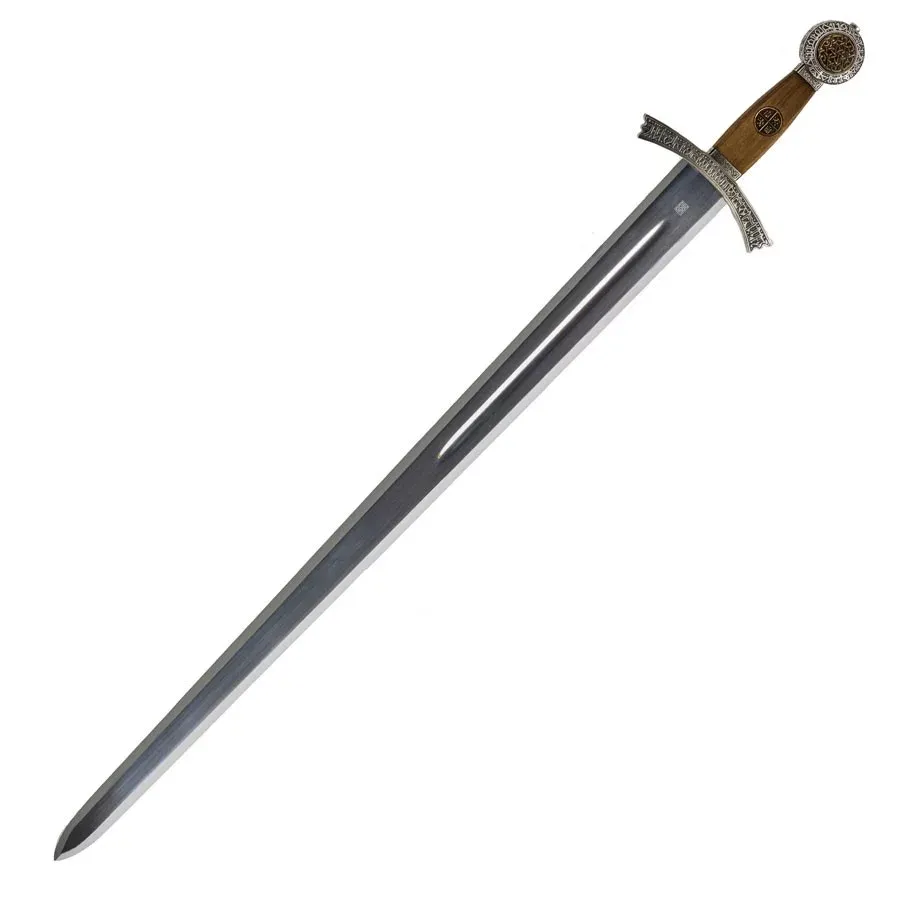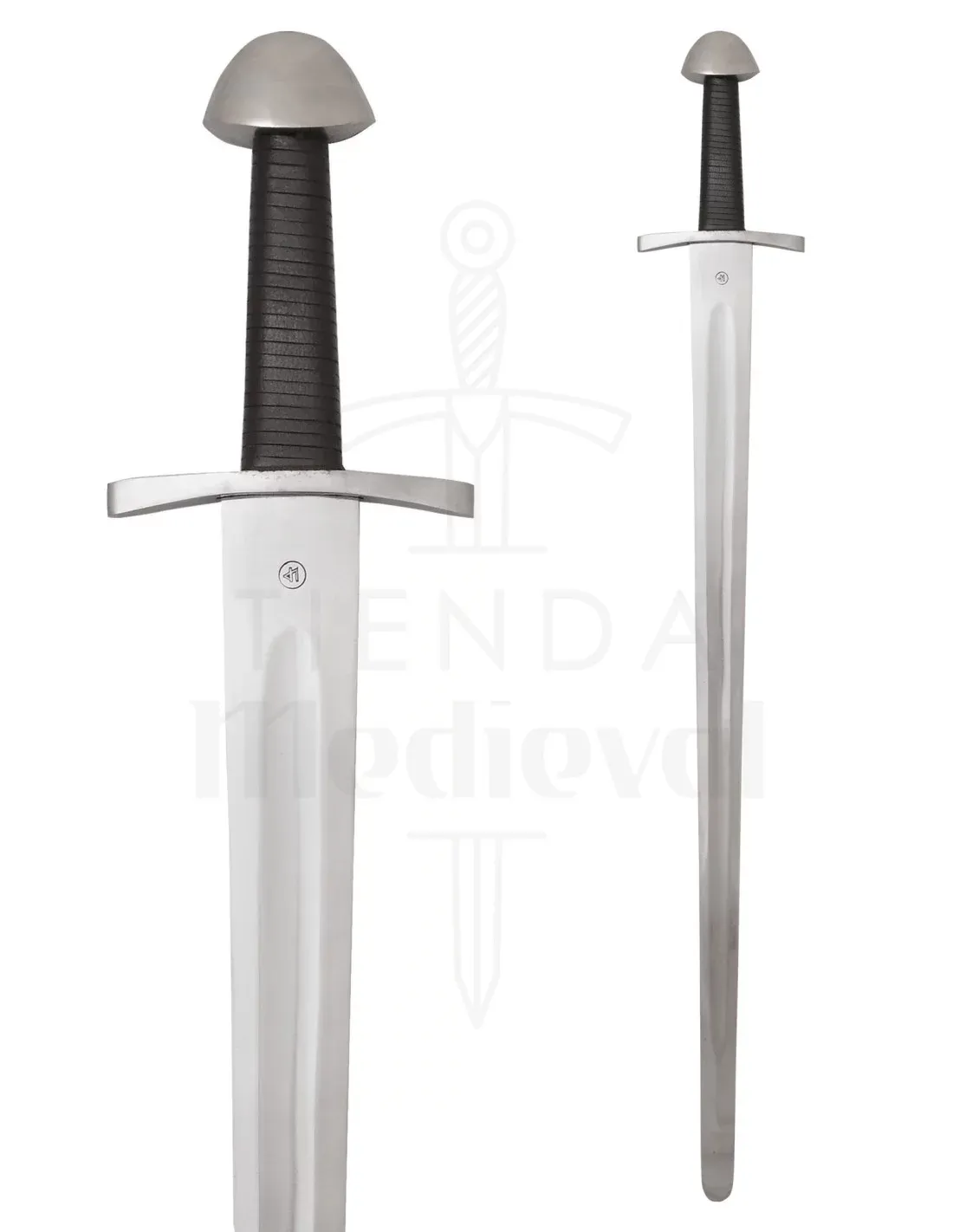What is a Sword of War?
Broadswords, historically known as "medieval broadswords," stand out as iconic weapons of medieval Europe. In particular, they played a significant role in France, serving as essential tools for knights and warriors of the time. Developed from the Roman spatha, these swords experienced significant evolution over the centuries to meet the demands of combat and military strategies of their time.
What distinguishes broadswords?
Broadswords are notable for several characteristics that differentiated them and gave them an advantage in combat:
- Straight double-edged blade: This design allowed for both cutting and thrusting, facilitating their use in various forms of close combat.
- Length: They ranged from 100 to 120 cm in length, allowing for a balanced mix of reach and maneuverability.
- Weight: Their weight, between 1,200 and 2,000 grams, ensured formidable impact without being excessively heavy for prolonged use.
- Grip: Generally designed for one-handed use, some variants allowed for the use of one and a half hands, providing additional tactical flexibility.
- Guard and pommel: A straight guard protected the user's hand, while the pommel helped balance the weight of the blade.
- Blade profile: They often featured fullers to lighten the weight without compromising structural integrity.
- Manufacturing: Forged using advanced medieval metallurgy techniques, they combined optimal hardness and flexibility.

Historical and social influence
The rise of broadswords coincided with the development of cavalry in the Middle Ages (5th to 16th centuries). For knights and the nobility, owning one of these swords was a symbol of status and martial capability. Over time, broadswords evolved alongside armor and military tactics, becoming weapons that not only symbolized prestige but also effectiveness in combat. In particular, the French cavalry widely adopted these swords, leading to the standardization with models such as the Norman sword and the "bastard" sword or half-hand sword. These adaptations modified both the grip and the reach of the blade to meet the changing demands of warfare.
Strategic advantages of broadswords
- Balance between power and control: Thanks to a balance point near the guard, broadswords were manageable for making quick and precise attacks.
- Durability: The materials and forging techniques provided great resistance to wear and impact, prolonging their lifespan in battle.
- Adaptability: Designed to be effective against various types of armor and enemies, they could be used for both cutting and thrusting.

Legacy and evolution throughout history
Broadswords provided the foundation for the development of other European medieval weapons, such as the longsword and the rapier, continuing their influence even into the Renaissance with lighter swords. Although the prominence of these swords declined over time, for much of the Middle Ages, they represented more than just a simple instrument of war; they symbolized prestige, valor, and nobility. Today, broadswords and their replicas are valued by collectors and historical reenactors, preserving a vital part of Europe's cultural and military heritage.
















